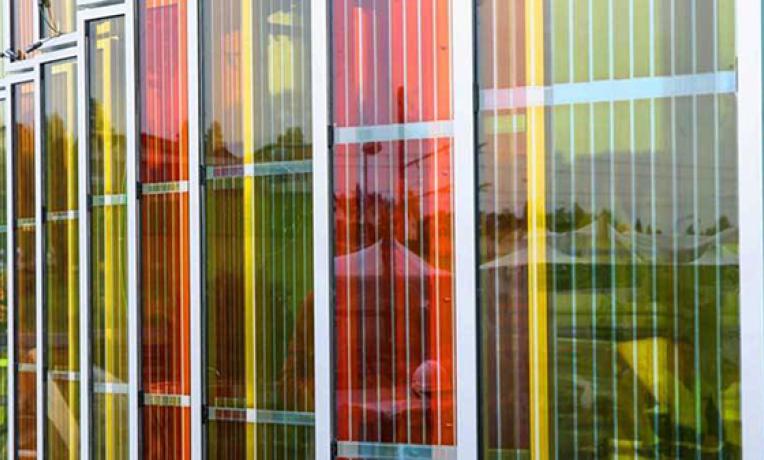Solar cells: on the road to a technological revolution
The Sun provides a steady source of power that could make solar energy a sustainable alternative to conventional sources of energy, provided that technological advances can actually reduce energy production costs. Prof. Michael Grätzel modified the composition of dye-sensitized solar cells to significantly increase their efficiency, including for indoor use. His result laid the ground for paradigm shifts that could revolutionise solar cells technology

Efforts to improve the efficiency of photovoltaic solar cells have been going on for decades. The challenge is to boost their capacity to convert sunlight into electrical power, while making them cheaper to produce. Conventional solar cells indeed require very pure silicon, an expensive material. Prof. Grätzel works on dye-sensitized solar cells (DSCs). In these cells, silicon is replaced by a dye or a coloured pigment used as a light harvester. As sunlight touches the cell, an exchange of electrons from the dye to the substrate produces electricity. When they were developed in 1991, DSCs had an efficiency of about 7%.
With his ERC project, Prof. Grätzel set a “revolution” in motion by fine-tuning the composition and colour of the cells. He replaced the standard dye components (ruthenium and iodine) with cobalt and porphyrin (a dye whose structure resembles that of chlorophyll). Solar cells could better mimic plants photosynthesis, including their greenish colour, and their energy conversion rate jumped to 12%. Their performance became comparable to silicon-based solar panels on the market.
This result, published in 2011, has opened the door to other European research groups to further improve DSCs using “perovskites” (a metal halide material with a crystal structure of the calcium titanium oxide mineral), pushing their efficiency to 20%. The combination of technologies promises to boost this figure even further.
In parallel, Prof. Grätzel has been working on applications, integrating state-of-the-art technologies. A Proof of Concept grant supports solar cells commercialisation for use indoors, in appliances with low energy needs such as digital music players, cell phones and hearing aids. The cells can also be used to create flexible and transparent solar panels: glass smart windows converting sunlight into energy.


